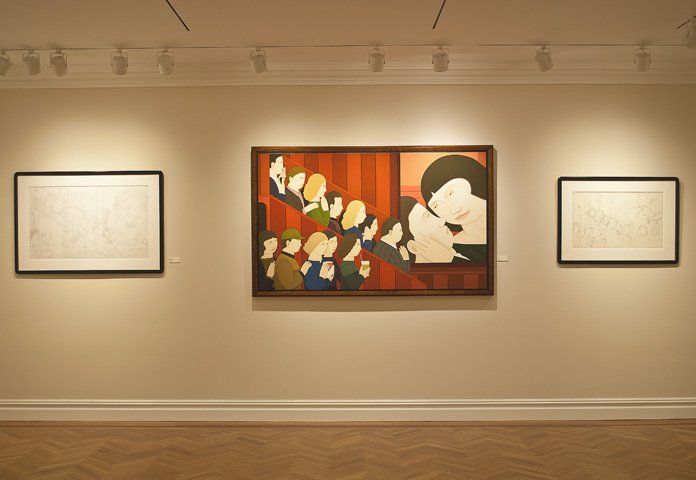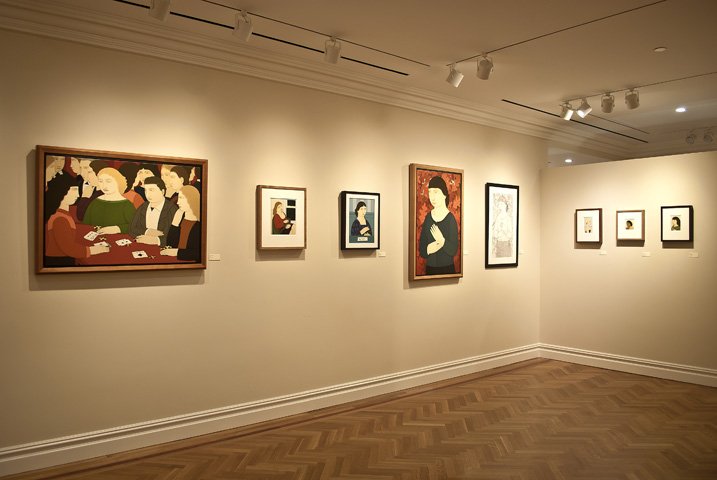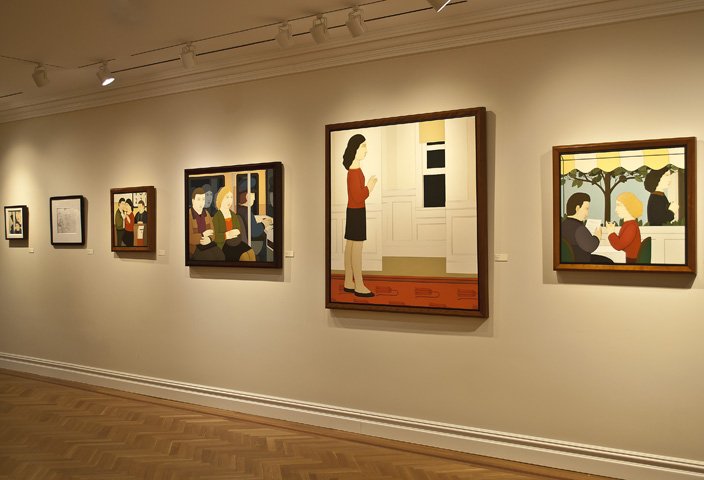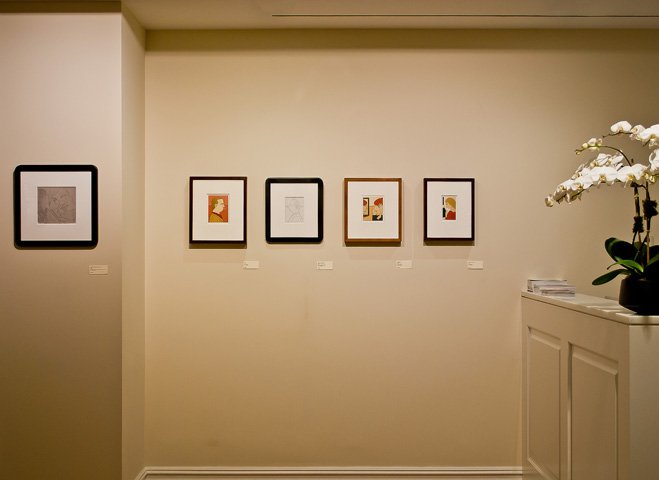Andrew Stevovich: Familiar Faces
Boston
February 6 - March 15, 2015
New York
March 24 - April 25th, 2015
I have been surrounded by Andrew Stevovich’s work my entire life. In the house I grew up in, my parents hung Sargent and Cassatt in the living room, and Stevovich in the kitchen, where our family spent most of their time. I have fond memories of relating to these quiet pictures while I was eating. I imagined that the Woman with a Fishbowl (1996, figure 1) depicted a narrative of my pet, Goldie, and the menacing previous owner who seemed ready to torment my poor goldfish with her net. As a child, I saw simplicity in Andrew’s oils. I understood them to be more familiar than the cartoons I watched on Saturday mornings; yet, like the cartoons, the imagery represented daily life in a colorful and entertaining manner. Now, as an adult, I see the complexity of his soft, linen canvases. I see the intricacy of composition and technique, as well as the density of his subject matter.
The underlying complexities of Stevovich’s process contrasts with the flatness of his characters. What at first seems simple about these paintings becomes elaborate when investigated thoroughly. Compositionally, the people and objects are very carefully designed. Often using the Fibonacci ratio (a mathematical formula derived from biological forms), the artist arranges curved and straight lines in a way that simultaneously balances the canvas and expands the image beyond the frame. Stylistically, his figures seem casually drawn — given their ethereal appearance; however, the artist painstakingly applies each line with deliberate precision. By shifting the angle of the parabola that separates the lips of a mouth or curve of an eye, Stevovich achieves a range of emotion with a very minimal approach.
The negative space that fills between the features of his figures’ faces transform the paintings into mirrors. The lack of wrinkles, skin spots, or other facial imperfections allows viewers to identify psychologically rather than compare with the physiognomy. I see myself in them. I react in recognition of modest pleasures or empathize with multifaceted pains. Depending on my mood, I read the inconclusive narrative of each scene with varying responses. For example, at one moment in the day, I may perceive Woman with a Grey Cat (2014, pg 48) as a hopeful allegory for living alone in peace, and fifteen minutes later, I will look at her again with a feeling of mutual loneliness. For me, each representation evokes a cluster of assorted sentiments from eroticism and envy to anger and boredom. I find the character of these polished paintings allows intimate, personal responses due to their absence of idiosyncratic attributes. Occasionally, Stevovich repeats themes that resonate with him. One relevant example is his triptych, Lola (2005, figure 2), a predecessor to a few recent artworks. The artist frames a couple in an amorous entanglement, and places two other couples in separate panels, in their own worlds, adjacent to the embracing pair. The strangers, who have walked in on this private moment, have similar reactions — gesticulating a hand, looking away, or glancing towards the lovers with envy.
In Stevovich’s more recent, singular portrayal, Lola Too (2014, page 15), he removes the voyeurs, and forces the viewer to have their own response. On this smaller scale, one can look closely into this encased view and read the glance between them. The artist’s most recent creation, Movie (2014, page 9), places us, the spectators, in a crowd as one of many. We are in the movie theater. A few of Stevovich’s prior pieces have led up to this moment. One composition illustrates moviegoers buying tickets. Another depicts the crowd rushing to devour popcorn before the film. A third shows the audience politely racing on the stairs to claim the best seats. Finally, we are inside, and we see a narrative on the screen that the artist has been alluding to for years — the embracing couple with an uncertain relationship. The theme of the theater reminds us that we are all observers of one another. We are constantly looking at pictures of others and comparing our perception of them with ourselves. The theater has traditionally been the arena to celebrate this innate human curiosity. Stevovich exposes this fact, and reminds us that we are not as unique as we think. Although we all see through different eyes, we share a common bond through similar passions and desires.
Celebrating a nearly 35-year relationship with the artist, Adelson Galleries will, for the first time, exhibit Familiar Faces in both Boston and New York locations. The exhibition includes paintings and drawings from the last few years, which exemplifies Stevovich’s distinctive style and exposes his willingness to take new risks in scale, perspective, and subject. We hope you enjoy the show!
Adam Adelson






